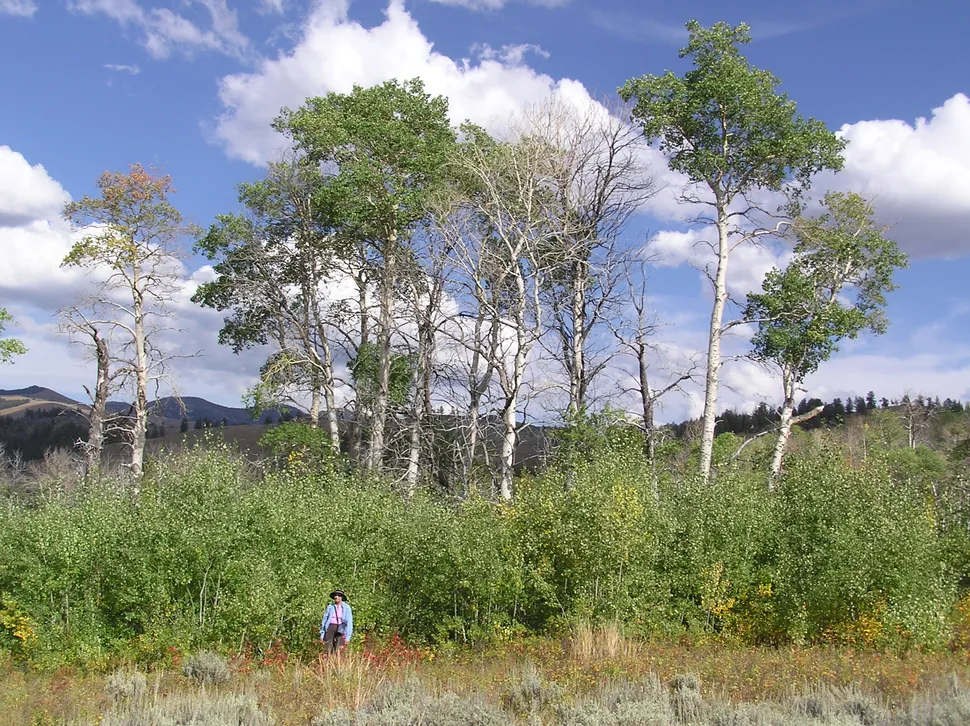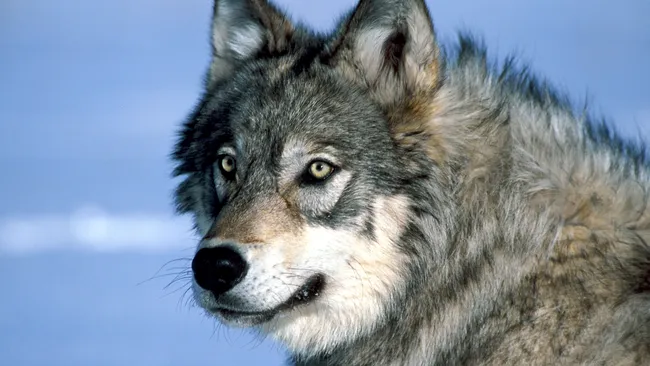Gray wolves were reintroduced in Yellowstone National Park in 1995 to help control the numbers of elk that were eating young trees, and it is finally paying off for quaking aspen.
Wolves Are Reviving Yellowstone’s Aspen Forests After 80-Year Gap
For the first time in nearly 80 years, young aspen trees are growing tall enough to join the forest canopy in Yellowstone National Park — and it’s all thanks to wolves.
A new study led by Oregon State University ecologist Luke Painter reveals that the reintroduction of gray wolves (Canis lupus) to Yellowstone is allowing quaking aspens (Populus tremuloides) to make a long-awaited comeback in the park’s northern range.
Wolves were wiped out from Yellowstone by the 1930s due to hunting, habitat loss, and government eradication programs. In their absence, elk populations exploded, eventually reaching up to 18,000 animals. Without natural predators to control their numbers, elk freely grazed on grasses, shrubs — and young aspens. By the 1990s, scientists surveying the park found no aspen saplings at all.
“You had older trees, and then nothing underneath,” Painter told Live Science.
But now, with wolves restored to the ecosystem since the mid-1990s, the tide is turning.
“We’re seeing significant new growth of young aspen,” Painter said. “This is the first time we’ve found it in our plots.”
These aren’t just saplings — they’re robust young trees with trunks over 2 inches (5 centimeters) in diameter at chest height, a size not seen since the 1940s. While the trees are still vulnerable to disease or grazing, their larger size makes them more resilient.
Aspens also reproduce clonally, meaning once a few reach maturity, they can quickly spread by sending up shoots from their roots, or through seed dispersal.
Wolves Reshape the Food Web
This rebound isn’t just about trees. It’s an example of trophic cascade — how the return of a top predator can transform an entire ecosystem.

Aspens support a wide range of biodiversity. Their open canopy lets in light, which encourages the growth of berry-producing shrubs and ground plants. That, in turn, attracts birds, insects, beavers, and other wildlife. Beavers especially benefit, as aspens, willows, and cottonwoods provide essential food and building materials.
“There are even hints that bear and cougar populations are rising in the area,” Painter noted. “We don’t yet know why, but it’s an interesting trend.”
However, it’s not all smooth sailing. Although elk numbers have declined, bison (Bison bison) are increasing in some areas. Unlike elk, bison are far more difficult for wolves to hunt, and their grazing could pose a new threat to aspen recovery.
Lessons for Rewilding Efforts
The Yellowstone case offers powerful evidence for the role of predators in maintaining healthy ecosystems.
“The study shows the ecological benefits that come from restoring wolves to Yellowstone,” said Professor Dominick Spracklen, a rewilding expert from the University of Leeds. “Ecosystems without large carnivores often fall out of balance.”
He added that while wolf reintroduction raises valid concerns around human-wildlife coexistence, the ecological rewards can be immense.
Painter agrees: the aspen resurgence can’t be explained by climate change or random chance — it’s a direct result of putting wolves back at the top of the food chain.
